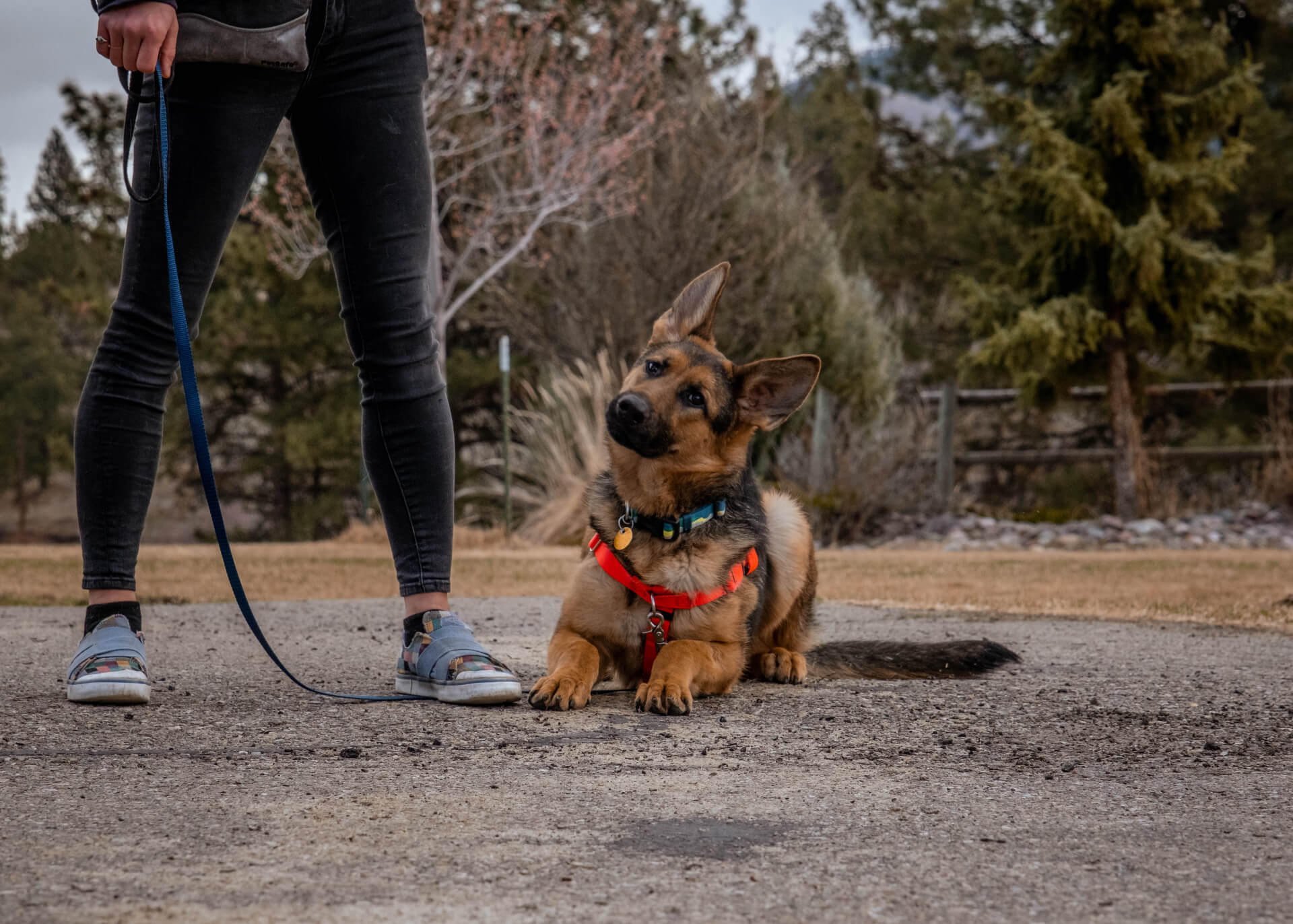
Destructive Chewing
Dogs need to chew for a variety of reasons. Dogs chew to strengthen their jaws, to investigate new things, for entertainment, and to relieve anxiety. There are certain times in a dog’s life when they are more focused on chewing. These include the teething and adolescent stages of life. But most dogs enjoy chewing throughout their lives. It is up to you to provide age appropriate toys and to teach your dog what is okay to chew, and what is not. Until your dog has learned the rules it is important to manage her environment so that she doesn’t have the opportunity to chew on inappropriate things. Chewing is a perfectly normal behavior, but destructive chewing can occur for a variety of reasons.
Prevention Through Management
- Dog-proof your house – Put valuable objects away until your dog learns the rules of the house and outgrows her peak chewing phases. You can also implement baby gates, exercise pens, and crates to further prevent your dog from reaching certain items. Make it easy for your dog to succeed by only providing her with access to appropriate items.
- Be consistent – Only give your dog appropriate toys and chews. It will confuse your dog if you give her an old shoe, and then scold for chewing up the shoes from the closet. She will not understand that some shoes are okay to chew and others are off limits. Only provide her with appropriate, designated toys to play with and chew on.
- Create a “safe place” – Until your dog learns the house rules, confine her to a “safe place” whenever she is unsupervised. If you crate or pen train her then that can be her safe place. Otherwise, you can use a baby gate or confine her to a room with a bed, water, and appropriate toys when she isn’t being actively supervised.
- Be realistic – Despite your best efforts, mistakes are normal. If your dog gets a hold of something inappropriate, keep in mind that she is only doing what dogs do and that her actions are never out of spite.
- Reward your dog for making the right choice – Praise your dog when she has chosen the right item to chew on. Have a toy in hand when you greet her and teach family members and guests to offer a toy to your puppy to engage her in a game of fetch or tug. These simple things teach your dog what to play with and chew on as well as how to play appropriately with people.
Understanding The Causes of Destructive Chewing
- Play or boredom – Normal play behavior may lead to destruction since dogs play through mouthing, digging, chewing, shredding and shaking objects. Your curious dog may explore a new garden decoration by mouthing it. Once she discovers that it is pleasant to chew she may decide it is a fun new toy! It is important to provide her with appropriate toys, reward her for using them, and prevent access to inappropriate items. Your dog may be destructive due to these reasons if she is left alone for long periods of time, has a relatively barren environment, is a puppy or adolescent without an outlet for her energy, or is a particularly active dog without enough exercise or mental stimulation. These are the most common causes of destructive chewing and they can be addressed through management, an increase in exercise and mental stimulation, and providing the right toys for your dog.
- Separation anxiety – Dogs with separation anxiety suffer from an irrational fear of being alone. Destruction caused by a dog with separation anxiety is typically focused on escaping. Examples include destruction to door frames, doors, window sills, window coverings, and flooring near exits. Just because a dog scratches at the door when you leave does not mean that she has separation anxiety. However, if your dog causes damage to entrances and exits while home alone then you should discuss your concerns with a veterinarian and behaviorist/trainer. For assistance determining if your dog suffers from separation anxiety see our handout on the topic and call our free Behavior Helpline.
- Attention-seeking behavior – Far too often, we ignore the good dog and inadvertently reward the bad. Be sure to praise and reward your dog when she is quietly resting and chewing on her bone. If a dog only gets attention when they steal an item off the table and run off with it, then they are going to continue to practice that behavior. Use positive reinforcement to teach your dog to “drop” or “give” an item on cue so that you can easily recover stolen items. Play trade games with your dog using her toys so that she learns that giving something to you is a good thing to do.
- Fears and phobias – Sometimes a dog is destructive in response to something she fears. A common example is loud noises. Your dog may be destructive due to fear if the destruction only occurs when she is exposed to the fearful stimuli and the destruction is focused on doors, windows, and walls. If your dog is being destructive out of fear speak with your veterinarian and a trainer/behaviorist about your concerns.
What Not To Do
Punishment is rarely effective in reducing destructive chewing and can make things worse. Never discipline your dog after the fact. Dogs only have three seconds (at most) to associate a behavior with a consequence. People often think that their dog knows they did something bad because they have a “guilty look” when they get home and discover an accident or chewed item. In fact, dogs display submissive postures like cowering, running and/or hiding if they feel threatened by the tone or volume of your voice or body language and facial expressions. Your dog doesn’t know what she has done wrong, only that you are unhappy. Punishment after the fact will not only fail to resolve the undesirable behavior but it often creates new problems. This is why dogs that “act guilty” continue to destroy things when their human is not home.
